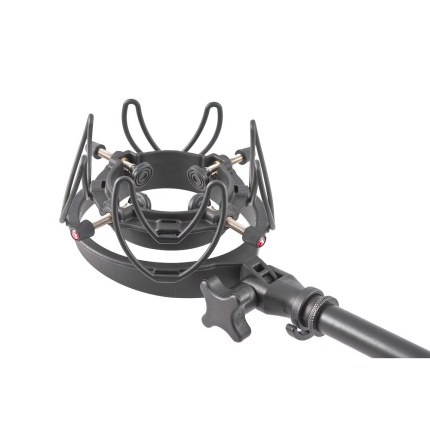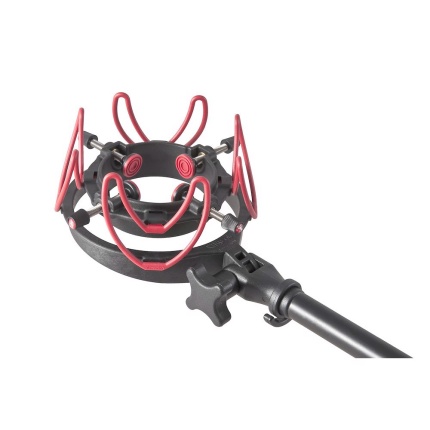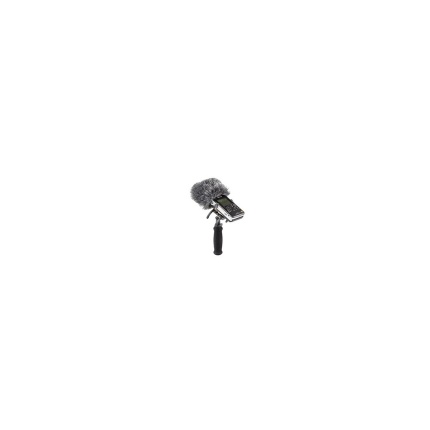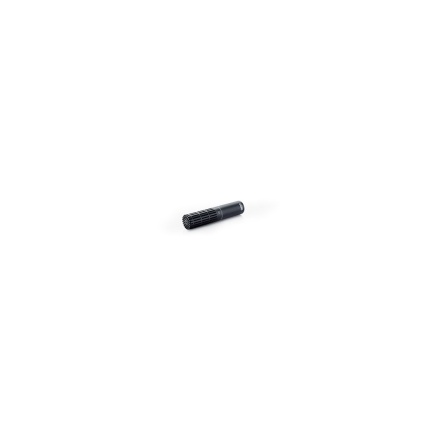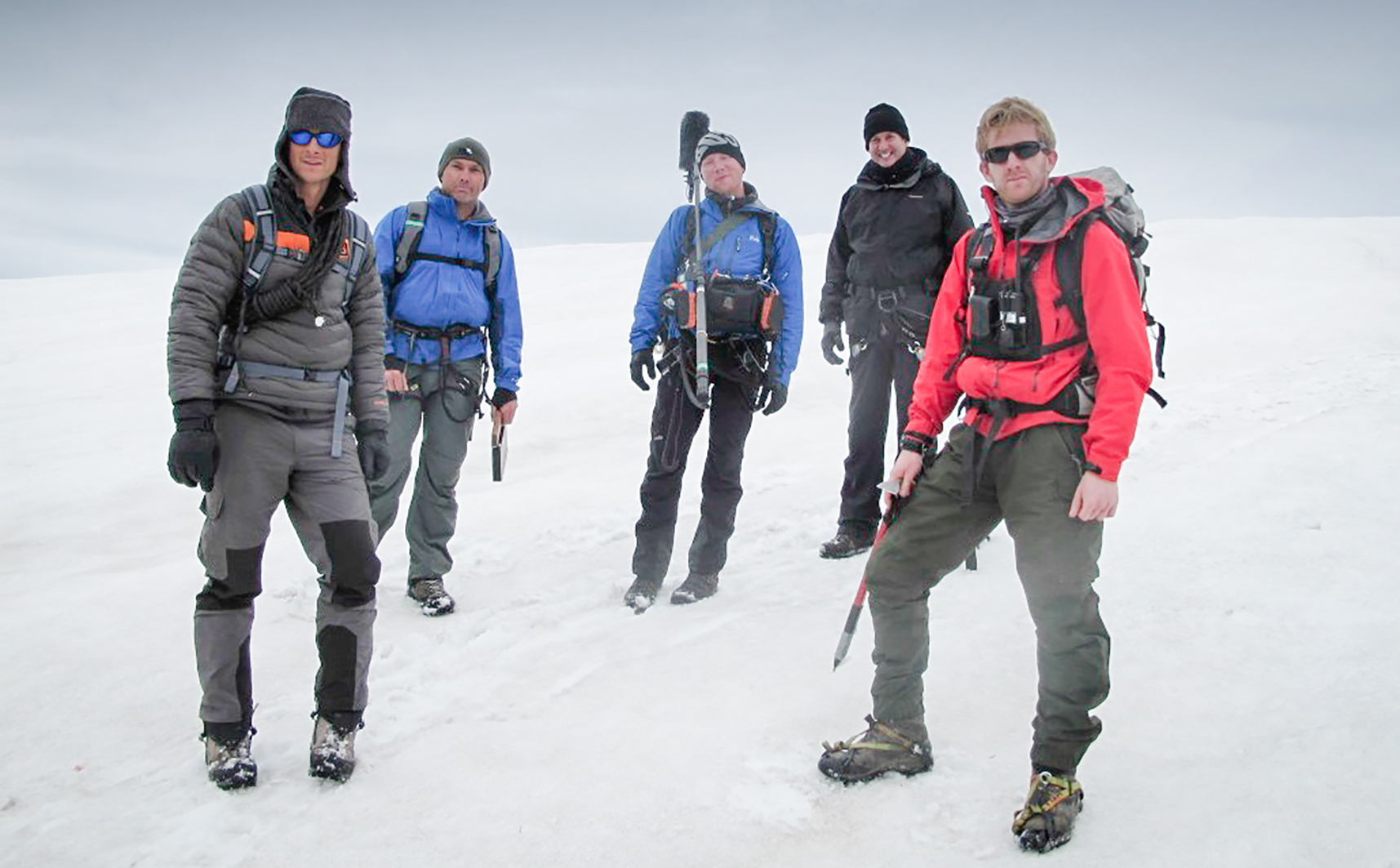



Interview Series
Sound recording in extreme environments.
Today we welcome Darrell Briggs. Darrell’s experience is extensive, working on a wide variety of productions from documentary to film and drama. We find out what documentary work is like when a pride of lions unexpectedly share his campsite in the Serengeti and the challenges of filming inside a live volcano in the Democratic Republic of Congo.
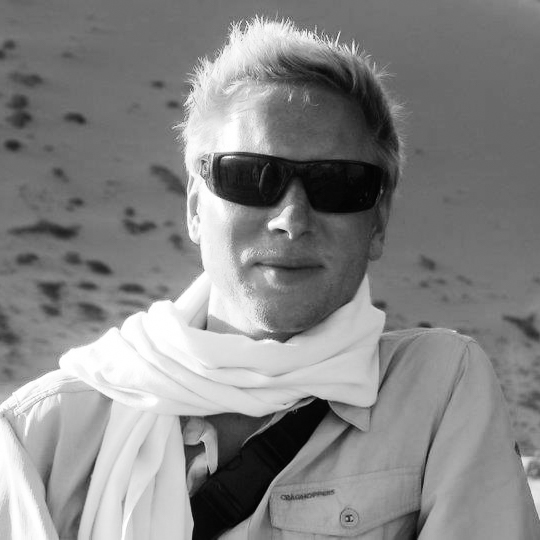

Tell us a little about yourself.
Where are you based, what do you do?
My name is Darrell Briggs, I’m a sound mixer, sound recordist and sound supervisor. I’ve been working in the sound industry for 22 years now. I originally started in music, playing the guitar – very badly! A lot of my friends in school and college were a lot better than me, so it quickly fell upon me to record them, rather than play. That was my introduction into the world of audio, and I always knew that I wanted to do something with sound. I finished college and started a multi-track recording course, at that point my full ambition was to work in a music studio. As part of the course we had to complete a Film and Television module, I hadn’t considered anything other than music before then and it provided a new avenue of interest.
After I graduated, I began sending out hundreds of CVs to music studios and production companies. To cut a long story short – I ended up getting a trainee sound recordist job at a small company in Soho. I worked for them for 5 years before making a move and going freelance, and I’ve been freelance for 17 years now.
I’m based in London, but I rarely seem to work in London. A lot of my work has been abroad, with some far-away assignments that involve a lot of travelling. I am trying to ‘settle-down’ a little bit and I’m not doing quite so much travelling now. Unfortunately, I still never seem to get home every night, I’m always away in one form or another.
Over twenty odd years I’ve worked on a wide variety of productions, historically a lot of documentary work but that part of the industry has really changed now.
Can you tell us about some of the productions you have worked on?
Over twenty odd years I’ve worked on a wide variety of productions, historically a lot of documentary work but that part of the industry has really changed now. In the last ten years I’ve done much less documentary work – if any these days. Currently I’m doing drama and a lot of big multi-camera format ‘Discovery’ type productions, a lot of American productions. That’s what’s keeping me busy at the moment.
This year started with three films back-to-back about 1970’s American serial killers, ‘Angel Of Decay’, ‘The Chameleon’ and ‘The Headhunter’. I’ve just finished something called ‘Obsession – Dark Desires’, which is a series of ten one-hour dramas, all for American TV. These were true-life stories and, as the name would suggest, were ‘stalking stories’ basically, about someone who has developed an obsession – or had an obsession developed by someone else. These were dramatised as a TV series. These took up most of the year for me.
Between the films and ‘Obsession’ I slotted in a show called “Mygrations” which was billed as a sort of ‘natural history meets survival’ show. Again this was for American television, and was, essentially, about 20 survivalists and ultra-marathon runners, walking the migration route of the wildebeest through the Serengeti, in Tanzania. That was a multi-camera and multi-radio mic affair, and there were about 8 crews working on that. So that’s what has made up my year so far.


What is a typical day like as a sound production mixer?
Well, that varies massively depending on what the job is. On a drama a ‘typical day’ is something that is much more quantifiable, on wilderness based shows, almost anything can happen. Shooting ‘Mygrations’ in the Serengeti, we arrived at camp one night to find our local guides looking-up at lions on a rock, they were probably about 50ft away from us. We discovered that we were sleeping underneath them all night, in the middle of the Serengeti. So, there was a certain amount of trepidation with that! I remember thinking ‘I’ve not knowingly signed up for this’. That’s why it’s often difficult to quantify what a ‘normal’ or ‘typical’ day is like.
‘I’ve used Rycote products a long, long time. Almost like clothing is to a person in these hostile environments; the Windjammer is the microphone’s first line of defence.’
Darrell Briggs
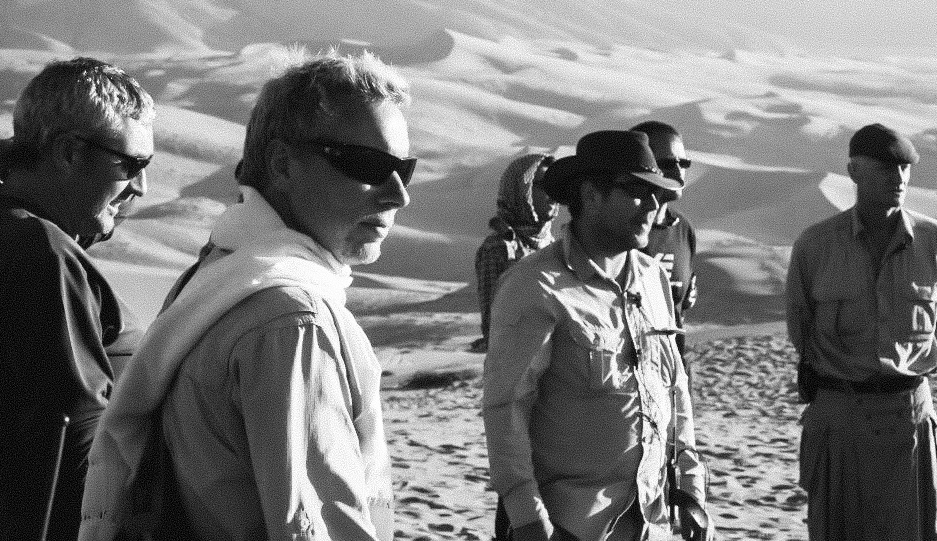

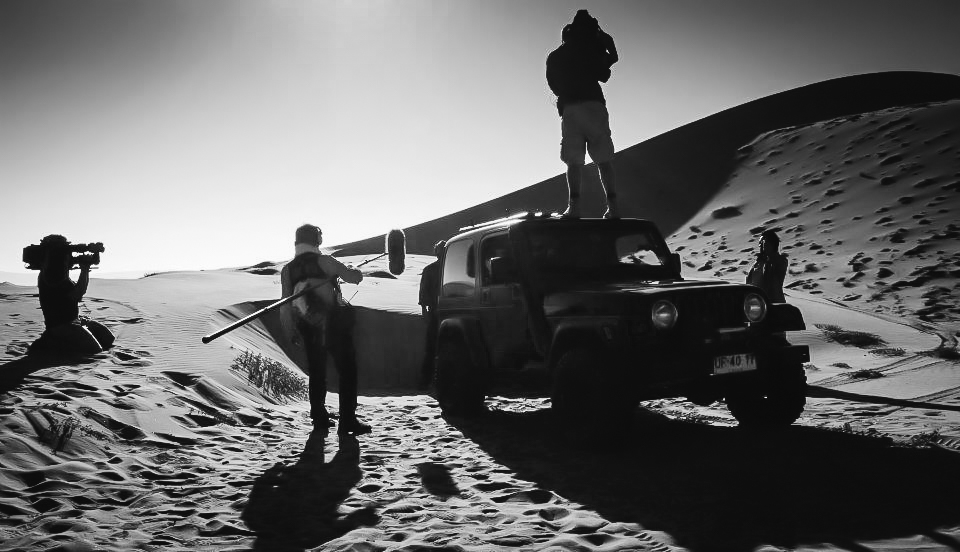

You have had to deal with some tricky environments, in the Serengeti for example, was there any particular issue there with heat, dryness or sand? How do you look after the kit in these hostile environments?
In the same way as for humans, exposure can be a problem and it’s an equal problem for equipment too. In lots of places I’ve filmed it can be blisteringly hot and dry one minute and then there’s a torrential downpour and it’s actually quite cold the next. Again, it’s being prepared for anything, and the fact that the weather and climate can throw anything at you. If you are in the middle of nowhere, there aren’t any options to say – “oh, that bit of kit has just failed because I haven’t looked after it properly, we’ll just source a replacement from a local hire company!”
The technical challenge is keeping yourself and all of that equipment going in quite difficult environments, there is something very satisfying about that. It can be very hard and miserable if you get it wrong! These locations are very different from filming in a sound studio, not that that doesn’t present its own technical challenges but there aren’t many unexpected technical challenges to do with the environment. In a howling gale and torrential rain, wading through a river or on the move with the sun baking on your back, when you are focusing on these physical things it’s about being able to still function and do your job, whilst nature is throwing everything at you.
All of my microphones fit in Rycote’s of different guises, and that’s been the way since my first microphone — 20 odd years ago, a Sennheiser MKH 816 in the old suspension that just had two big rubber grommets, before the elastic suspensions. I’ve used Rycote products a long, long time. Almost like clothing is to a person in these hostile environments; the Windjammer is the microphone’s first line of defence. It keeps the wind and rain out, and it’s something that you can easily remove, dry out and put back on. I would not have been able to record most of what I’ve been able to – and I would certainly have lost a lot of microphones along the way – without any ‘barrier’ between them and the wild. These days everybody, apart from sound recordists, seems to love having radio mics on people. I still firmly believe that the best and most adaptable tools in my toolbox are my boom-mounted microphones. That said, you can have the best microphone in the world, but unless you can protect it from the wind and the environment then it’s completely useless.
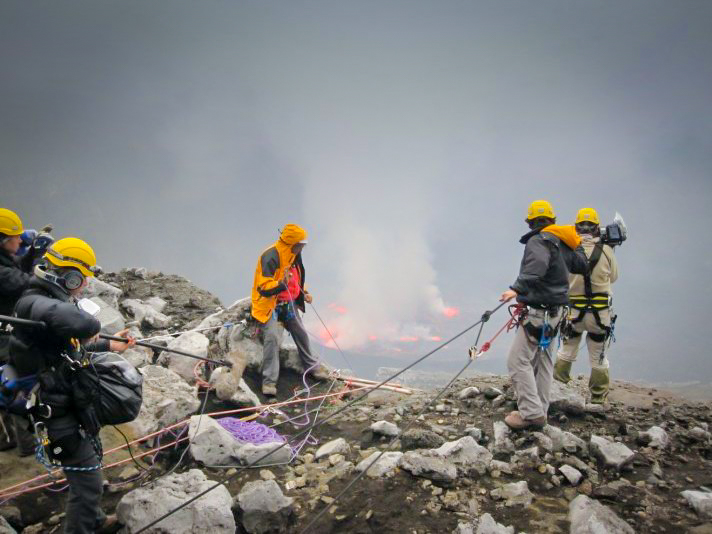

We camped at the lip of the volcano for two weeks, abseiling and climbing in every day with kit strapped to our backs. It was a really tough shoot, but incredibly rewarding.
How do you deal with the technical challenges of uncooperative weather for example?
Thinking of some of the more extreme places, wind is the obvious issue, and one of the main functions of the Rycote Windjammer is to protect from wind noise, which otherwise would completely destroy a sound track. The noise of a flapping microphone diaphragm simply renders the dialogue completely useless.
There was a particular show I did in the Nyragongo volcano in the Democratic Republic of Congo, it has the largest permanent lava lake in the world, over 1km across.
We camped at the lip of the volcano for two weeks, abseiling and climbing in everyday with kit strapped to our backs. It was a really tough shoot, but incredibly rewarding. You’d get these temperature inversions happening, wind would suddenly rush up the inside wall of the volcano at certain times of the day. It could go from it being completely still to suddenly getting this huge hot, sulphurous wind rushing up the walls of the inside of the crater. Those are the sorts of moments where you want to be able to strip-off the Windjammer to help you out in terms of dynamic range, where it’s not necessary, and refit it easily and quickly when needed – whilst dealing with a harness with ropes, shunts and climbing apparatus and a gas mask wrapped all around me. It’s important to be able to work with the kit quickly and easily, and I’ve always found the Rycote gear to be very simple and easy to use.
Simon Davies gave me one of the pre-production models of the Medium Cyclone, which I think is a huge, huge step forward, particularly in terms of ease of use. After using the Cyclone, it has become painfully apparent to me just how much easier it is to use than the old modular Windshield. It’s so much quicker to release and open, and to get the basket on and off quickly – which is really important especially in a more ‘documentary’ situation, where you are definitely working quicker. Now, being able to just pop the basket off, with no thumbscrews on the suspension to tighten up, means you can just fly the boom immediately. That means that the basket comes off more often, to the benefit of the sound. The magnets mean it goes back on very quickly too, so it’s something that I wish I’d had in that volcano, it certainly would have made it a lot easier!
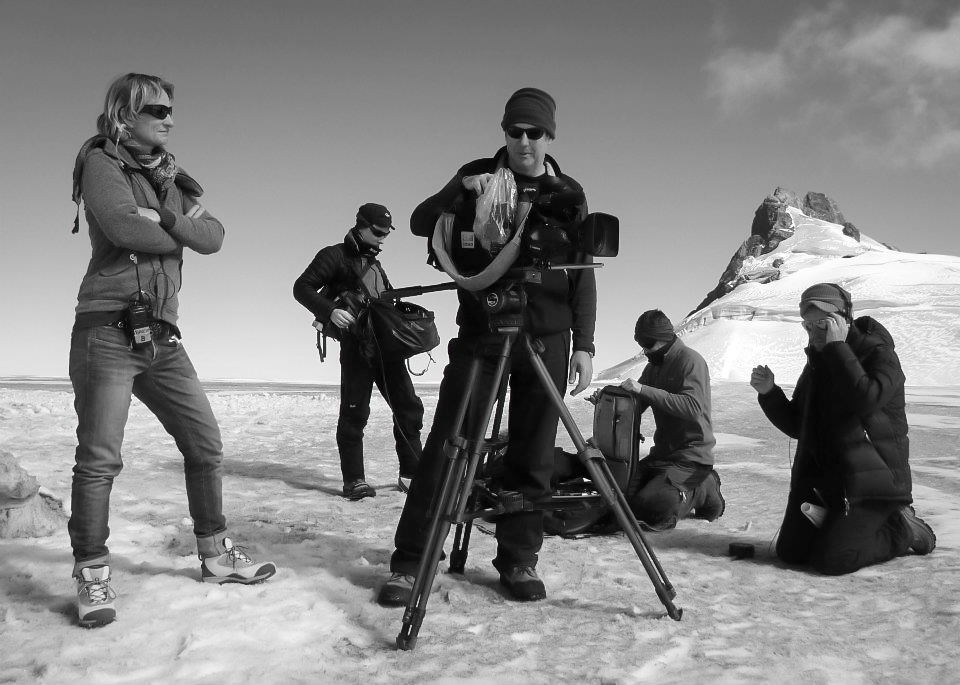

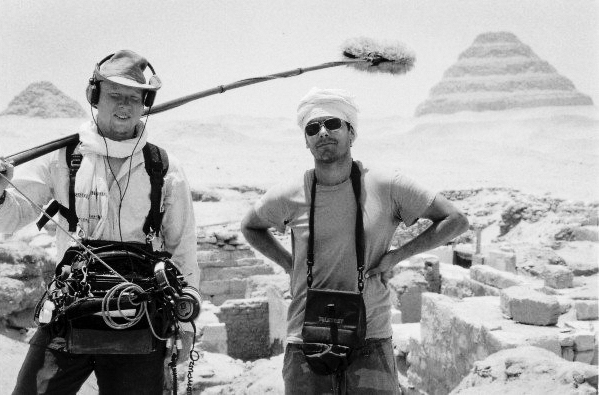

How have you seen the Film & TV industry change over the years? What do you think the future holds for the industry?
Well I think it will be interesting, I can’t help walking around department stores these days and thinking that the set-up that the average person has in the home now, the quality of equipment that they are viewing and listening to has improved massively. When I was young it was a black and white TV with a funny little tin speaker! Now I have, as many people do, a 5.1 system in my home. Then of course there’s 4K and now 8K being talked about in terms of resolution for television, so these are interesting times. People really expect quality, obviously, and it’s pointless having a system like that if what you deliver to it isn’t on a par.
Things move very quickly, and I think that one of the biggest changes I’ve seen in the industry during my time in it, is that every year it seems we need to work quicker and do more with less money and with less time. That means really working efficiently, and to do that you need to be working with equipment that is made that way, and isn’t overly complicated in its design, despite often having a complicated job to do.
Productions seem to have less money, I’m not sure that they do actually have less, its just that the money is often spent elsewhere, often for very good reasons, Alot of productions will now have a Health and Safety department, which ensures the safety of all of us, and that’s obviously money very well spent, but these are the sorts of things which productions didn’t necessarily have to have, say 20 odd years ago, when I started out in the business. That money has to come from somewhere.
I think most people would agree that there’s been a general tightening across the board from productions. And obviously the quality cannot drop as a result of that; – that’s what I mean when I say it’s ‘more for less’, and in less time. One way to make a production more economical is to make it a shorter production, but that doesn’t mean that you can just say — “well, that hour-long TV program we wanted to make, actually we’ll just make it 45 minutes instead” — it means you have to shoot that 60 minutes in 5 days less than you would have done previously. I guess that means people working harder and working smarter, and that’s a change I’ve seen. One of ways that you can make that happen is by equipment manufacturers recognising that, and then developing products that help us. That’s what I look for, in the products that I buy. I want things that are going to help me to do my job, to the best of my ability, and also quickly and easily. Also, the equipment needs to easily adapt for different situations.
‘Simon Davies gave me one of the pre-production models of the Medium Cyclone, which I think is a huge, huge step forward, particularly in terms of ease of use.’
Darrell Briggs


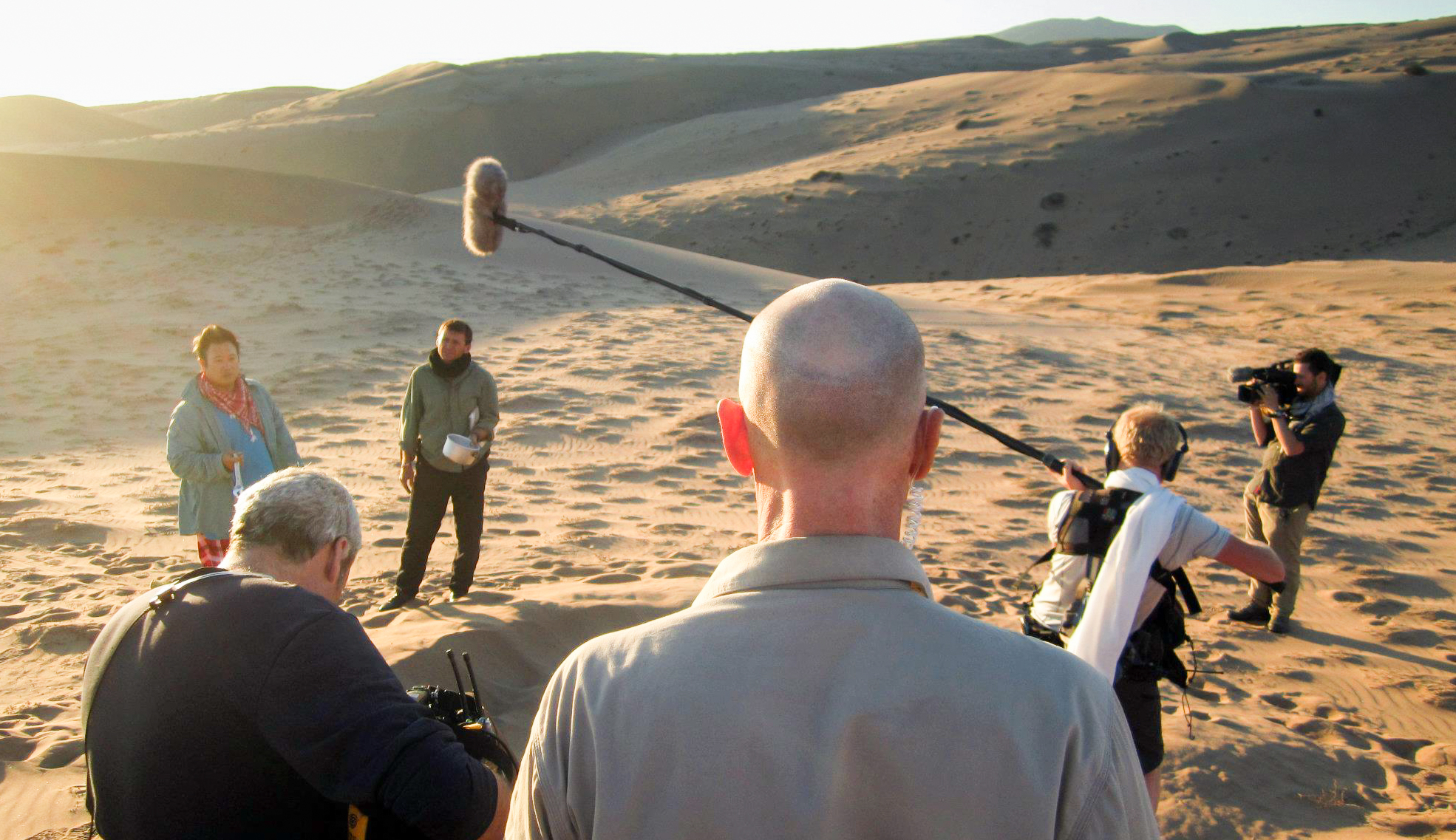

What’s in your kit bag and why?
I guess at the heart of my kit is the Sound Devices 788t, which I use with a CL9 if I’m working on the trolley or a CL8 if I’m working in a bag. Microphone-wise, I’ve got 3 Sennheiser MKH 50’s and they are my ‘go-to’ microphones. I love the sound of the ‘50’; that presence – particularly dialogue , so I’ll use that as much as I can. I’ve got 2 Sennheiser 416’s as well, a Sennheiser 418s and an old 816 although that rarely comes out these days as it’s a cumbersome beast. I have 3 Sanken CUB-01’s which I use in cars a lot, they are small with a low profile and just sound much better then a personal mic. I have 8 Lectrosonic SRB radio mics, which I use with a multitude of Sanken COS-11D’s. And then I use Sennheiser G3 evolution systems for my comms and IEMs.
And of course all of those boom-mounted microphones live in Rycote baskets and Windjammers. I’ve got a ‘50’ in a and the 416’s are in Modulars too, and one of the 50’S lives in a Softie or a Foam as I use that as a ‘plant mic’. My main ‘50’ is in a and I’m just waiting for the Small Cyclone with the angled XLR to come out and then I can drop a basket size for my ‘50’s’ and put my 416’s in a medium-sized Cyclone. So at that point I will be upgrading them all to Cyclones. As I say, I have been really quite impressed with the Cyclone, it seems a massive step forward. The effectiveness of the new suspension, dealing with handling noise, particularly with the 50 is a huge improvement.
I’ve got mixture of boom poles; I’ve tried all sorts in the past. My first pole was a Panamic, and I’ve got a couple of Panamic’s still. If I’m working with a boom op, which I have for the last year constantly, then they’ll basically choose the pole. Peter Davies is the guy I’ve been working with quite a lot and he’ll use the Panamic ‘Maxi’. Now I find that, if I’m working in a bag and booming and mixing, that’s just far too big and heavy. So I use the K-Tek ‘Avalon’ pole, which is about 15 feet long but it’s thin and lightweight and weighs a lot less. It is shorter then the Panamic ‘Maxi’, but if you’re working by yourself its got a really decent reach but its still manageable for one person. And the shorter pole is useful for interiors anyway, where there’s not a lot of room! I have used other makes but I’ve stuck with the two of those; the K-Tek and the Panamic.
For my kit bags I use Ian Fraser’s KT Systems modular bag system. I have been tempted by the Orcas and the new KTek bags but, because I do such a wide range of work, it means that I need to chop and change things – and having the modular bag system that Ian provides means I change things around very easily, I really like that. I think that sound recordists, as a ‘breed’, are generally quite fussy and we want things set-up exactly the way we want them set up. So, I like the fact that I can go and see Ian and he will modify something for me to meet my absolute needs.
You may wake up in the morning having been told a plan by production of what your day will entail, and what time you will start but actually, who knows what’s happened over night?
Do you have any tips for working on fast moving productions?
Partly because I do a wide range of things, to me a lot of it is in the preparation. Things can move pretty fast on set, even on fully scripted drama. Listening is obviously important, but also with headphones off. ‘Earwigging’ conversations between the Director, DOP, 1st and 3rd AD’s I find to be the best early warning system for discovering how a Scene or shot is developing and how those developments or changes will influence the Sound Department and what we need to do to change our approach in order to get what we need. In wilderness environments particularly, things can change very quickly and you have to be able to adapt and react just as quickly, the key is to be ready for anything. You may wake up in the morning having been told a plan by production of what your day will entail, and what time you will start but actually, who knows what’s happened over night? It’s very easy to sit back and say ‘well that is what’s happening’, but being prepared for any eventuality will make life a lot easier in the field. I think that is to do with planning, preparing kit and making sure it’s well looked after and serviceable at all times. Also, to a certain extent, it’s about not over-complicating things, because that can slow you down and make it harder to react to changing circumstances.
I could list a few, there was something called the “English Surgeon”, which I did around 7 or 8 years ago (or maybe longer), which was a feature documentary which got a theatrical release and won a lot of film festival awards. It was a very powerful story and it’s a film that people still contact me about, and that happened to me as recently as ten days ago. That’s extraordinary and really rewarding to have.
What’s your proudest achievement?
That’s a hard one that! Over 20-odd years there have been lots of standout jobs and things that I’m really proud of, for all sorts of reasons. Whether that be from a ‘sound’ point of view or maybe where it’s been from a group and team effort to make it happen. Or whether I was simply very pleased with the finished results.
I could list a few, there was something called “The English Surgeon”, which I did around 7 or 8 years ago (or maybe longer), which was a theatrically released feature documentary and won a lot of film festival awards. It was a very powerful story and it’s a film that people still contact me about, that happened to me as recently as ten days ago. That’s extraordinary and really rewarding to have. It’s nice to have people be so moved by something, that they feel compelled to send you a message and say ‘I’ve just watched it – it’s amazing’. So that would certainly be a standout one for me.
I guess, technically, there was a series of shows I did for the BBC, and again this was probably 8 or 9 years ago now, called ‘Take One Museum’. It was a series of 6 shows that were 30 minutes long each but they were all shot in one take – with no cuts – so that involved a lot of technical challenges. When I took the job on I hadn’t actually worked with the director before and I assumed it would be a very safe and steady show, but it was quite the opposite! This director really wanted to push the boundaries of what was possible, and he’s actually became a very good friend of mine.
The show featured Paul Rose, who was a commander of the British Antarctic Survey and an all-round ‘explorer type’. He would go round a museum that had a particular story, meeting and chatting with people, usually experts in their field, along the way. This was quite a challenge. I can remember, during December or January, being up to my chest in the North Sea on the Orkneys, handing a boom pole (with a Rycote on the end of it!) to the director, as we climbed up an aluminium ladder onto a rib craft… whilst filming, as obviously there were no cuts. So yes, passing off a boom pole to him, over the presenter’s head, so that I could climb up the ladder and then take it back off him, and then we shot across this bay and all the time I’m thinking ‘this is nuts’! There was so much that could have gone wrong – and nothing did. So yes, those were proud moments. We would rehearse for a day, and then the next day start shooting and we would generally do 4 takes, the best take kind of ‘won’, as it were, and was the one that got transmitted. I had a real sense of achievement at the end and, on the one hand, it flew by and on the other hand it sometimes felt like it lasted a lifetime. There was certainly quite a lot of pressure but it was great to finally get it done. It relied on so many different people who had to get their particular element of it right, and it was a real coordinated effort, which felt great in the end.
‘All of my microphones fit in Rycote’s of different guises, and that’s been the way since my first microphone — 20 odd years ago.’
Darrell Briggs


What are you looking forward to next in your career?
Well, at the moment I’m on a bit of a break as I have a baby on the way. It has been a very busy year; in fact, the last seven or eight years have been phenomenally busy. In terms of my job and career, I’m looking forward to doing more and more drama. I’ve always done a fair amount of drama, but I’m getting older and some of the mad ‘survival/expedition’ stuff I’ve been doing over the last six or seven years, whilst I enjoy it and find it thrilling, I’m looking forward to trying to get home at night a bit more – rather then sleeping in a tent 40 feet away from lions!

